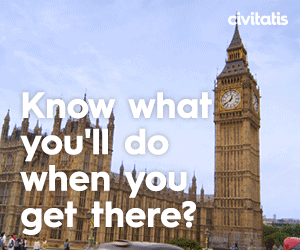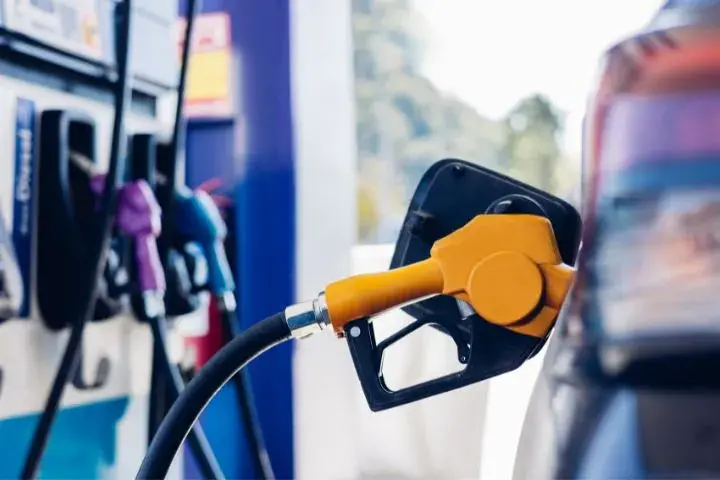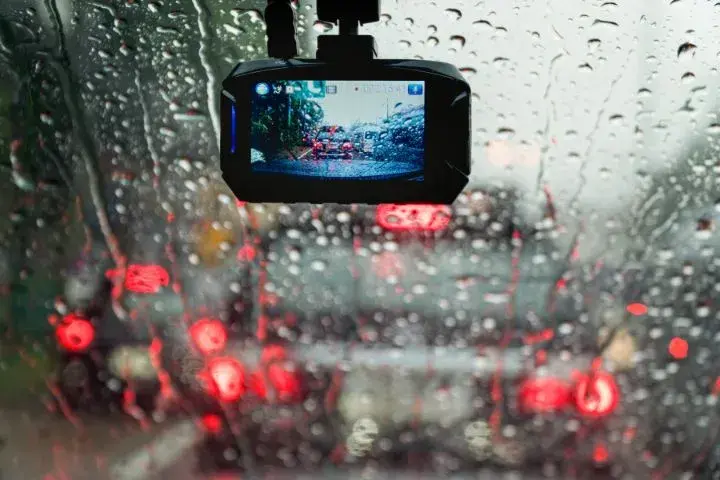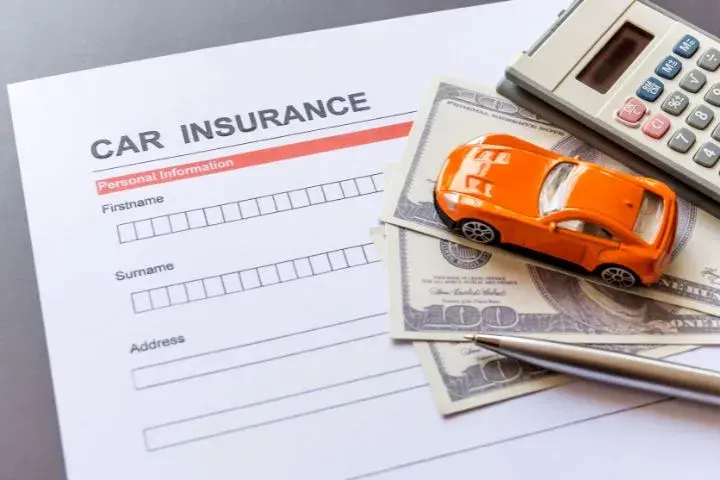European Road Signs Meaning: Complete Visual Guide for 2025 Travelers

by Assia A. | Last Updated April 14, 2025

Ever found yourself squinting at a bizarre triangular sign while driving through rural France? You’re not alone! European road signs can feel like hieroglyphics to the uninitiated traveler.
In a continent where you might cross three countries in a single day’s drive, understanding these universal visual languages isn’t just convenient – it’s essential for safety.
According to the European Transport Safety Council, misinterpreted road signs contribute to nearly 15% of tourist driving incidents across the continent. Let’s decode this visual language so you can navigate European roads with confidence!
Understanding European Road Sign Systems
Let me tell you, driving through Europe was a total game-changer once I finally understood their road sign system! Most European countries follow something called the Vienna Convention, which basically means the signs are pretty similar whether you’re cruising through France or Poland.
The colors are actually super intuitive once you get the hang of it.
- Red circles mean “don’t do this” – like no parking or speed limits.
- Blue circles are telling you what you must do.
- Yellow or white triangles with red borders? They’re screaming, “Heads up, potential danger ahead!” I’ve learned this the hard way after nearly missing a sharp turn in rural Italy.

The shapes matter just as much as the colors.
- Triangles are for warnings.
- Circles for instructions or prohibitions.
- Rectangles usually give information or directions.
Some countries throw in their own twists, though. The UK has some unique blue signs that confused me for days, and Sweden uses more yellow backing on their signs which can be super visible during their dark winters. Trust me, downloading a quick reference guide specific to each country your visiting is worth every minute spent.
Warning Signs: Triangular Red-Bordered Signs
You know that moment when you’re cruising down a scenic European road and suddenly spot a red triangle with what looks like a leaping deer? Yeah, that’s your cue to slow down! These triangular, red-bordered signs are literally lifesavers on unfamiliar roads.
The most common ones you’ll spot include
- Animal crossings (we’ve had to brake for everything from deer in Germany to wild boars in Spain).
- Zigzaggy curve ahead warnings and the dreaded roadworks sign usually mean your GPS time estimate just went out the window. Been there, done that, got stuck for an extra hour outside Barcelona!
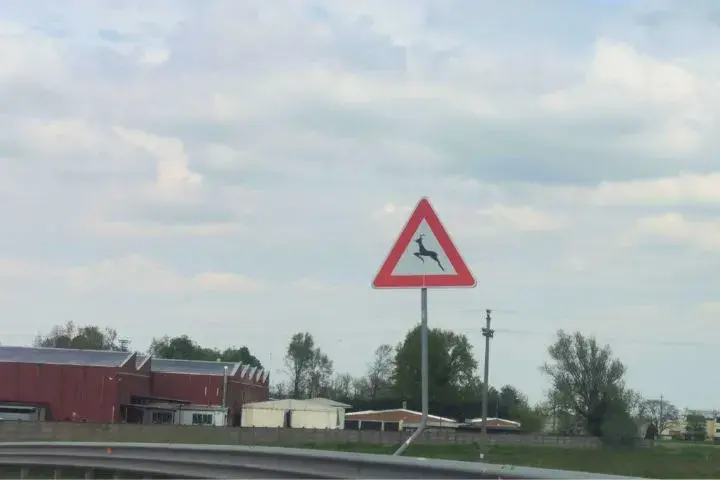
Some of the more unique warning signs totally threw me off at first.
- The falling rocks sign – which shows literal boulders tumbling down – is super common in mountainous regions like the Alps.
- Ice hazard warnings feature what looks like a skidding car, and they’re taken very seriously in Nordic countries.
Regional variations can be tricky too. While most countries stick to the basics, Spain uses more vivid yellow backgrounds on some signs, and Norway sometimes adds extra text descriptions under the symbols that’s easy to miss if your driving past too quick.
Always worth checking the specific signs for wherever you’re heading before your trip.
Prohibition Signs: Red Circles with Various Symbols
Ugh, those red circular signs with the big numbers? Yep, they’re speed limits, and missing them can turn your dream European road trip into a costly nightmare! Trust me on this one – I’ve had my share of speeding tickets from France to Croatia.
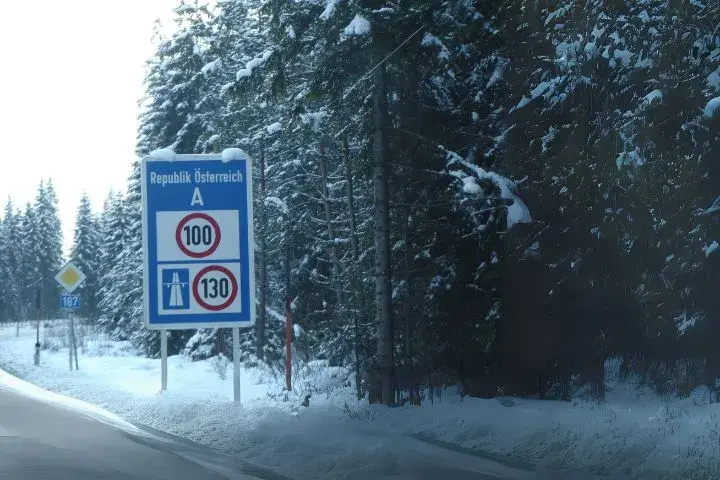
- Speed limits vary weirdly between countries. Germany’s famous for those stretches of autobahn with no limits (heaven for driving enthusiasts!), while most countries stick to around 130 km/h on highways. But watch out in urban areas – they drop to 50 km/h or even 30 km/h in residential zones, and these limits are enforced like crazy.
- The no-entry sign – that red circle with a white horizontal bar – is pretty universal across Europe. I once accidentally drove down a one-way street in Lisbon because I wasn’t paying attention.
- No-parking signs get more complicated with their additional plates. Some have time restrictions that’ll make your head spin – like “no parking 8-12 except Sundays and residents.” I’ve seen tourists get their rental cars towed in Rome because they misread these confusing little time plates.
For specific vehicle restrictions, look for silhouettes inside those red circles. Trucks and motorcycles have clear symbols, but sometimes, you’ll see weird ones like “no vehicles carrying dangerous goods” near tunnels.
Mandatory Signs: Blue Circles with White Symbols
Those blue circles with white symbols? They’re basically Europe saying, “you MUST do this” – no ifs, ands, or buts about it! I learned this lesson the hard way driving through the Alps one winter without noticing a certain blue sign.
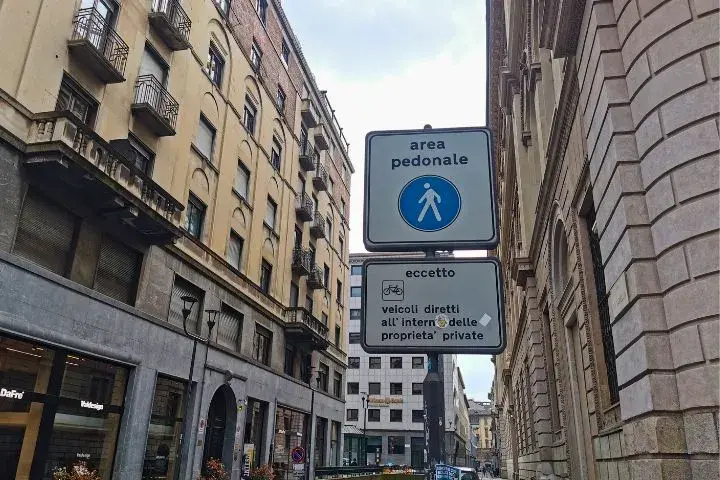
- The directional flow signs are pretty straightforward – arrows telling you which way you gotta go. But sometimes, they catch you by surprise at complex roundabouts or intersections with multiple lanes.
- Equipment requirement signs are absolute game-changers, depending on the season. That blue circle with a snow chain symbol isn’t a suggestion – it’s mandatory in many mountain passes.
- Lane designation signs can be tricky for tourists. Some lanes are reserved for buses or taxis only, marked by those blue circles with appropriate symbols. The bus lane fines in London are no joke – found that out the expensive way.
- Bicycle signs are everywhere these days as Europe gets more eco-friendly. Those blue circles with bike symbols indicate mandatory cycling paths where cyclists must ride – and sometimes where cars absolutely cannot go.
I’ve seen confused tourists accidentally walking on dedicated cycle paths in Amsterdam, leading to some pretty heated dings from bike bells! The pedestrian-only blue signs are your friends in busy tourist areas, though, guaranteeing car-free wandering through those charming European old towns.
Priority and Right of Way Signage
Let me tell you, understanding who goes first on European roads literally saved my bacon more times than I can count!
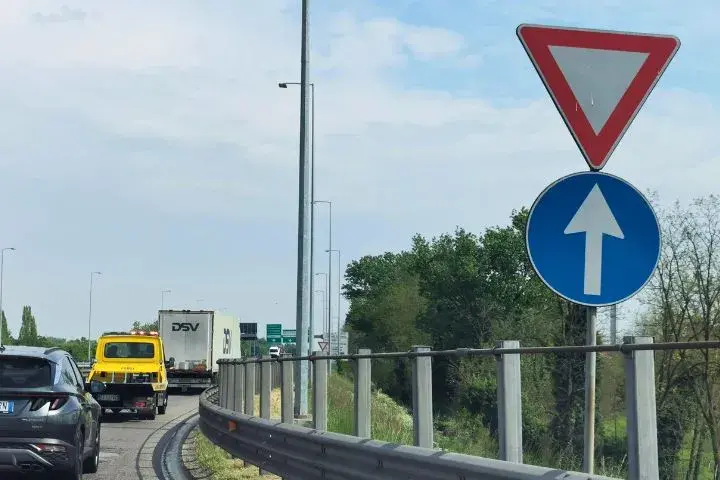
- The yield sign (that upside-down triangle with a red border) means you’ve gotta let the other traffic go first – sounds simple until you’re facing six converging roads in a Paris intersection.
- The diamond-shaped yellow sign with a white center? That’s the priority road sign, and it’s your golden ticket. When you’re on a road with this beauty, you’ve got right of way over side roads. I cruised through Germany feeling like royalty once I figured this out! But beware – this priority ends when the road does or when you see that black diagonal line crossing through the yellow diamond.
- Roundabouts are where things get truly wild. Generally, cars already in the roundabout have priority over entering vehicles, but some countries throw curveballs. In France, some older roundabouts actually give priority to entering traffic – absolute madness until you spot the special yield signs within the roundabout itself. My rental car nearly got sideswiped in Marseille before I caught on to this exception!
- The default priority rules vary, too. In most countries, if there’s no sign at all, the “priority to the right” rule applies – meaning cars coming from your right have priority.
Informational and Directional Signs
Highway signs across Europe are a whole different ballgame compared to back home! The blue (or sometimes green) rectangular beasts typically show destinations with distances in kilometers, but the way they’re organized varies wildly between countries.
In Germany, the signs are super organized with city names in size order based on distance – total lifesaver when you’re zooming along at 160km/h trying to find your exit!
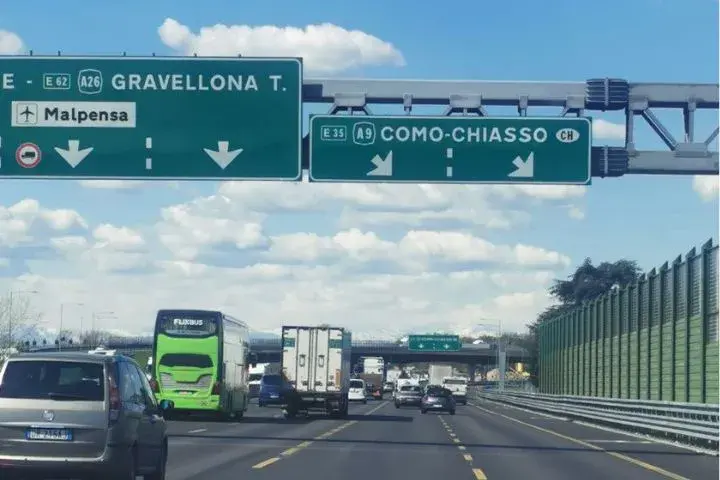
Tourist information signage is usually marked with that classic lowercase “i” on a brown or blue background. We missed these signs for the first two days of our Italian road trip and ended up completely lost in Tuscany.
Looking for a gas station or rest area? Keep your eyes peeled for blue signs with gas pump symbols or pictograms of a bench or cup. The rest areas in France (aires) are actually kinda awesome – some have these incredible views and decent food options.
Emergency service signs are literally lifesavers. The white cross on a blue background means hospital or first aid, and they’re usually well-marked with directional arrows.
The signs for police stations (often showing a police hat or badge) can be harder to spot, but they’re usually near city centers.
Temporary and Construction Zone Signs
Nothing ruins a perfect European road trip like suddenly hitting construction! Those bright orange or yellow signs with workers digging are universal warnings that your smooth drive is about to get interesting.
In Germany, they’re super organized with detailed diagrams of lane shifts, while Italian work zones sometimes feel like you’ve entered a confusing maze with minimal warning.

- Detour signs (usually showing “DEVIATION” or a local language equivalent) are absolute lifelines when roads close unexpectedly. We got caught in a massive Alpine road closure last summer and had to follow these yellow signs for nearly 40km! The temporary route was gorgeous but added two hours to our drive.
Sometimes, these detours are marked just with a letter in a yellow circle – follow all signs with the same letter, and you’ll eventually reconnect with your original route. - Seasonal signs pop up like mushrooms after rain. Winter brings those temporary snow chains required signs that shouldn’t be ignored – even if there’s barely any snow visible. I learned this lesson the hard way when our rental got stuck on a slight incline in Austria, and local police weren’t exactly sympathetic to my “but the road looks fine” argument.
- Navigating construction safely means slowing way down – those speed limits aren’t suggestions; they’re enforced by cameras in many countries. Keep extra distance between cars since lanes are typically narrower and sometimes poorly marked.
Digital and Variable Message Signs
Digital signs are everywhere on European highways these days! Ten years ago, they were pretty rare, but now, these massive LED displays hang over motorways from Portugal to Poland. On our last trip through the Netherlands, we counted more digital signs than traditional ones on some stretches – crazy how fast things change!
The variable speed limits threw me for a loop at first. Those illuminated numbers change based on traffic conditions, weather, or accidents ahead. I once watched the speed drop from 130km/h to 50km/h in sequence as we approached a major accident in France.
Ignore these at your peril – they’re usually monitored by cameras, and the fines are automatic. What’s tricky is when some lanes show different speeds than others – you’ve gotta stick to the limit shown above your specific lane. Lane control is super handy once you get used to it. A red X means that lane is closed (duh!), while green arrows indicate open lanes.
Emergency messaging can be a real lifesaver. These signs flash warnings about accidents, extreme weather, or other hazards in multiple languages, they sometimes display amber alerts or other emergency info too.
The future of road signage looks kinda wild – they’re testing systems in parts of Scandinavia that communicate directly with newer vehicles. Imagine your car automatically knowing about road closures or hazards before you even see a sign! Not quite there yet for most rental cars, but definitely something to look forward to on future European road trips.
Country-Specific Road Sign Quirks
Just when you think you’ve got European road signs figured out, you cross a border and everything gets weird again!
The UK really throws a curveball with their unique signs – those blue circles with red diagonal lines actually mean “clearway” (no stopping), not the usual prohibition. Nearly got a ticket in Scotland before a friendly local clued me in!
Spain has these awesome animal silhouette signs that are super specific to the region. Driving near Extremadura, we spotted signs warning of Iberian lynx crossings – way more detailed than the generic deer signs elsewhere.
France has peculiar “priority from the right” intersection signs that look like a big X with one arm bolded. Missed these completely on my first French road trip and had some scary near-misses at rural crossings.
Italy still uses some sign designs from the Fascist era on older roads, with distinctive fonts and shapes.
Norway‘s extra-reflective signs were developed specifically for their dark winter conditions – they practically glow in your headlights compared to signs in Southern Europe!
When crossing borders, things can get confusing fast. Speed limits often change without any obvious signage – just a small number inside that red circle at the border.
Always check the default speed limits for each country before your trip. Poland’s default rural road limit is 90km/h, while neighboring Germany’s is 100km/h, with minimal signage to alert you to the change. Also, keep small change in various currencies for those surprise toll roads that pop up right after border crossings.
Conclusion
Mastering European road signs doesn’t happen overnight, but with this guide, you’re now equipped to navigate through the continent with much more confidence!
Remember that while the Vienna Convention standardized many signs, regional quirks still exist – especially in the UK, which uses some distinct signage patterns.
Consider keeping a quick-reference guide in your vehicle during your European adventures. Drive safely, and embrace the journey across this diverse continent – clear roads ahead!

